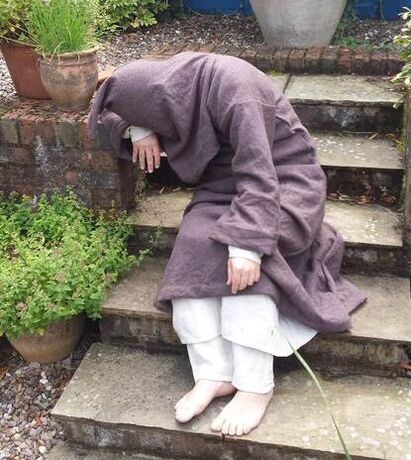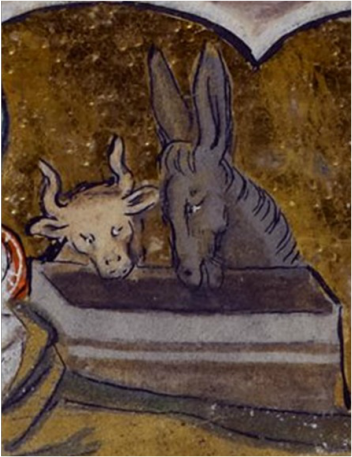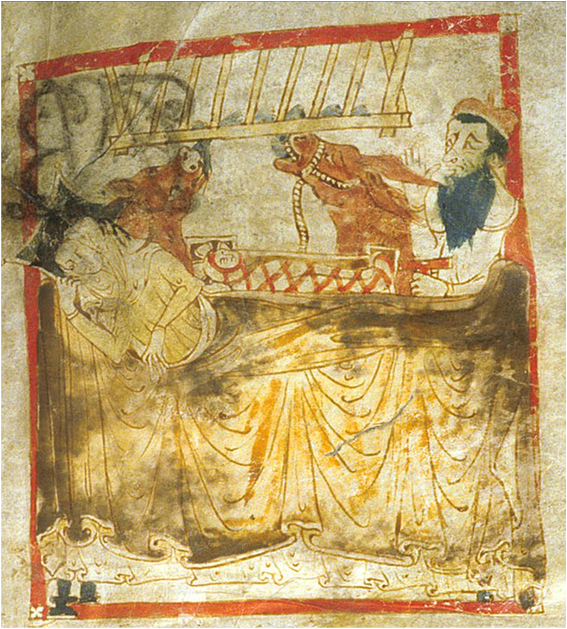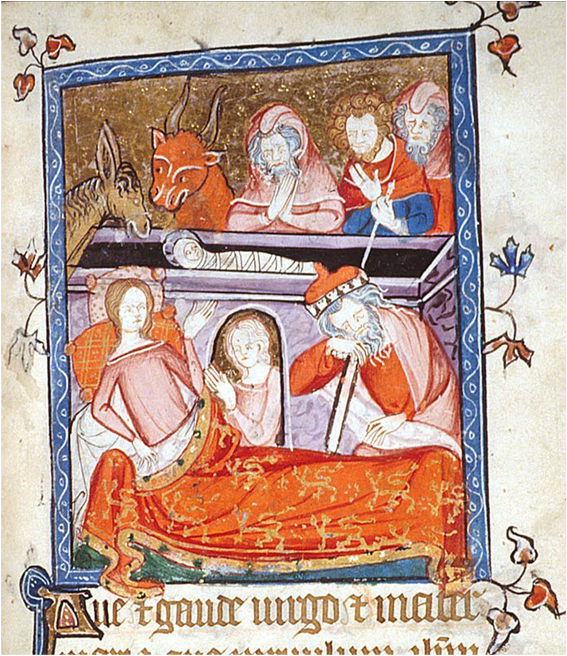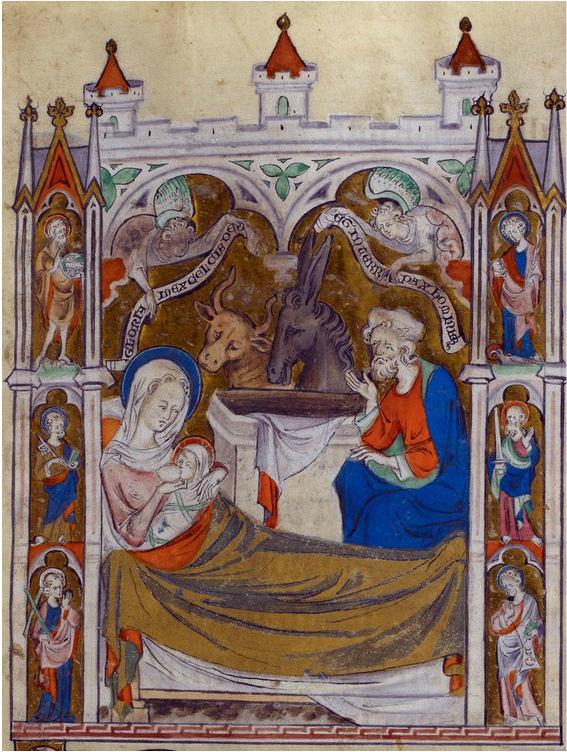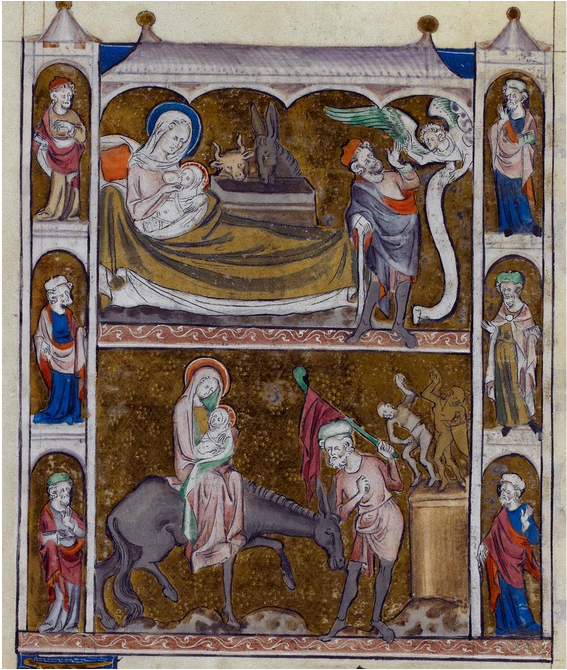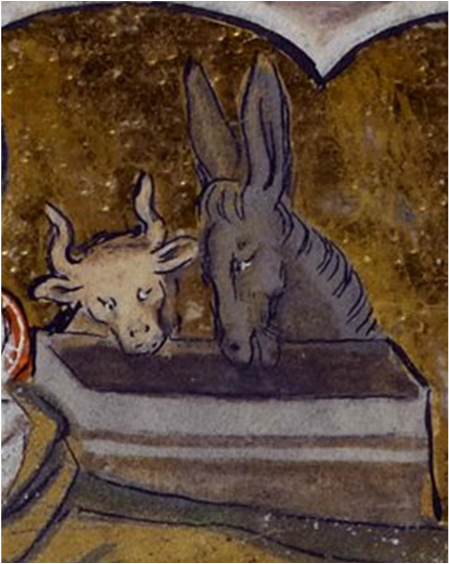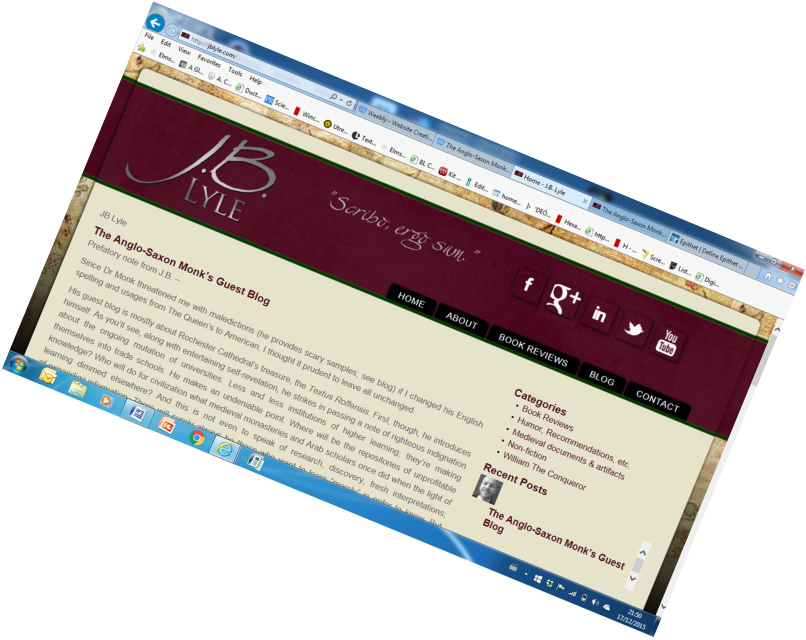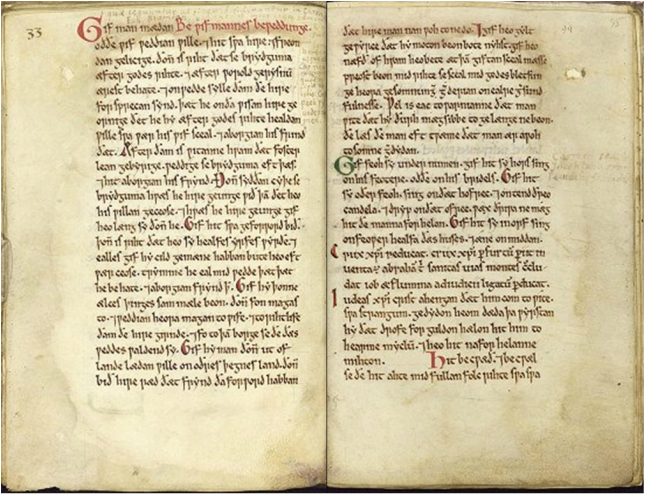Blessed readers, I had intended to provide you all with a detailed account of my monkish Christmastide duties here in eleventh-century England, but I have to confess that I get so confused myself with all the different ceremonies we monks have to participate in that I thought I had better not burden you, beloved, with my Christmas troubles. I swear I will get a grip! And by this time next year you will hear not only about our multiple masses, in the correct order, our antiphons and our Gloria, but I solemnly promise to provide you with a behind the scenes account of our special confession: always a treat to witness our beloved abbot grovelling prostrate on the floor before the whole brethren, imploring our forgiveness. I wonder what sins he’s committed this year? Anyway, I digress. Rather than inundate you, then, with such liturgical niceties, I thought I would revisit an element from last year’s Christmas post. Yes, we recycle here, too. Undoubtedly, you all remember with great fondness my commentary on three late medieval Christmas scenes – of course you do. Well, as you probably gathered, I was personally rather enamoured with the way the two nativity scenes I showed you deployed Donkey and Cow. How those later medieval folk loved them, this glorious couple of anthropomorphic adorers of the Christ child! Such expression, I can barely contain my wonderment. Now, you think I’m prone to unchristian exaggeration, here, I’m quite sure, but please take a close look at the three manuscript examples below before you condemn my admiration for these most beloved of our Lord’s earthly creatures. Oh, and I nearly forgot, do have the merriest of Christmastides! Have you ever seen Cow and Donkey looking so happy, singing their praises of the beloved Christ Child? Though it's tempting to suggest that Joseph thinks they're slightly deranged. And Mary has clearly just had enough. She's probably only just got rid of the heralding angels and the shepherds. Can't the Virgin have just ten minutes of peace after giving birth to the Son of God? I hate to say it, Mary, but the three kings will be along soon. I did warn you, Mary. But just look at the adoration of Donkey and Cow! You can almost hear Donkey saying, "He's just SO cute, I could eat him!" But who is that young woman between Mary and Joseph? I don't remember her in the nativity story. Any suggestions? I know I said three images, not four, but as I'm full of Christmas spirit (though, technically, mead is only fermented and not distilled), I thought I would give you two for the price of one. These two should, of course, be viewed together as they are from the same manuscript, and also the one follows the other in terms of the Christmastide narrative. Carefully note the faces of Cow and Donkey in the first scene (above). Such deep concern on the face of Cow: "I'm not sure the Virgin's got the hang of this breastfeeding, Donkey." But Donkey doesn't look too worried. In fact, he's rather caught up in the beauty of the moment, wouldn't you say? Now, it seems that trouble is brewing in the scenes below, if I'm reading it correctly. Just look at the close-up of Cow and Donkey from the upper register, and you will see that they're not happy with what that angel is saying to Joseph. And what is he saying, I hear you cry, what is on that scroll he dangles before us all? Well, I'm no expert on late medieval Nativity iconography but I think the clue is below in the lower register. And I don't mean the fact that the blessed family are being urged to leave their cosy stable in Bethlehem and head off into Egypt. Oh, no, you've worked it out too, haven't you, my blessed readers? Poor Mary is actually being told to cover up! Well, I never! Cannot the Queen of Heaven, the very Mother of God, be allowed some right to express her natural instincts? Well, Donkey and Cow think so. And there is at least some comfort in that.
0 Comments
Blessed readers,
We all know that Dr Monk, my estranged alter ego, likes to gallivant hither and thither, and so it comes as no surprise that he's managed to get himself involved in the rather dubious art of guest blogging. Mind you, I have to admit that the hosting website by Janis B. Lyle has a number of rather interesting articles on it, though it is a shame it focuses rather heavily on a certain fellow who goes by the grandiose epithet of The Conqueror. If you really must read his piece, follow the link below, but I should forewarn you that when he finally does get around to talking about something medieval, he somehow manages to lower the tone with a discussion of Latin expletives. Typical! Dr Monk's guest blog post. Textus Roffensis, folios 94v-95r. Image by permission of the Dean and Chapter of Rochester Cathedral . Well bless me!
Dr Monk, whom some wish to conceive of as my better half (don't believe it), has produced a learning resource based upon the manuscript Textus Roffensis. The work was commissioned by Rochester Cathedral, and is imaginatively entitled 'Reading Textus Roffensis'. Textus Roffensis is undeniably one of England's most important medieval manuscripts, and really, blessed ones, we should all know how to read at least a few lines of Protogothic Bookscript. What else have you got to do? Well, please enjoy it, though not too much as we don't want it going to Dr Monk's head now, do we? Oh, and apparently he's produced a short audio-visual thingamajig on which you'll find his readings of the passages he focuses on in the resource. So you may wish to indulge him there, too. The video is currently available on the 'Projects' page of this website, and I understand that it will also be made available via the cathedral's YouTube channel, whatever that is! Now, pardon me, but I have to get back to some real work, and I haven't yet sung my none prayers! |
Details
|

